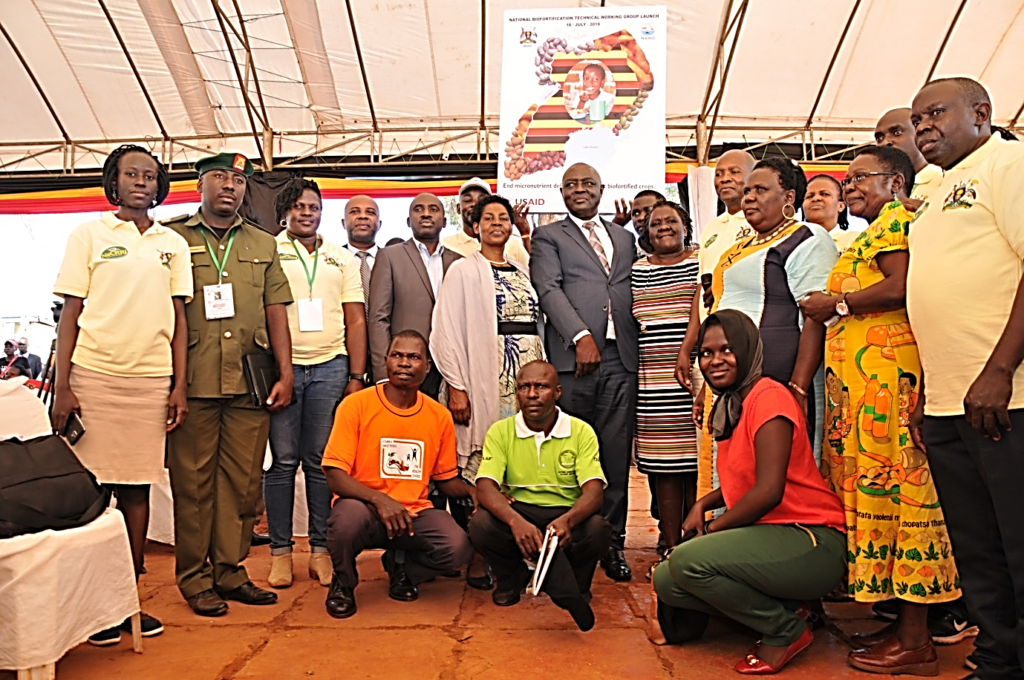Uganda is making a significant commitment to scaling up development and delivery of nutritious staple crops with the official work launch of the National Biofortification Technical Working Group (NTBWG) comprising public, private, and other stakeholders.
The launch took place during the National Agriculture Show in Jinja district and was presided by the Honorable Ssempijja Bamulangaki, Minister of Agriculture, Animal Industry, and Fisheries.
The NTBWG is composed of members of relevant government ministries, departments, and agencies; development partners; civil society organizations; academia; and the private sector. The NBTWG is led by Ministry of Agriculture, Animal Industry, and Fisheries.
The NTBWG, which will meet quarterly, will focus on providing technical advice; supporting development, review, and dissemination of enabling frameworks for scaling up biofortification; and supporting capacity development to improve biofortification initiatives. More generally, the group be a platform to increase advocacy for the promotion and consumption of biofortified crop varieties in Uganda.
Uganda’s National Agriculture Research Organization, with support from HarvestPlus and funding from the United States Agency for International Development, has developed bean varieties biofortified with iron and sweet potato varieties biofortified with vitamin A. These varieties can contribute to the sustainable prevention of micronutrient deficiencies in Uganda.
According to the HarvestPlus Biofortification Priority Index, Uganda is ranked fifth out of 123 countries for suitability to invest in iron beans and is ranked fifth out of 119 countries for investment in vitamin A orange sweet potato. This means such investments in Uganda present a relatively high probability of generating nutritional impact, based on how much the biofortifiable crop is already produced and consumed, and what proportion of the population is suffering from a given micronutrient deficiency.
Evidence from Uganda shows that consumption of orange sweet potato (OSP) can substantially increase increase vitamin A intake among women of reproductive age (WRA) and children under five; OSP provided up to 60 percent of total vitamin A intake, thereby meeting 100 percent of a woman’s or child’s daily average needs for vitamin A (Hotz et al., 2012). There is also evidence that iron beans can provide up to three quarters of the daily average requirements for iron among WRA (Hass et al., 2016).
